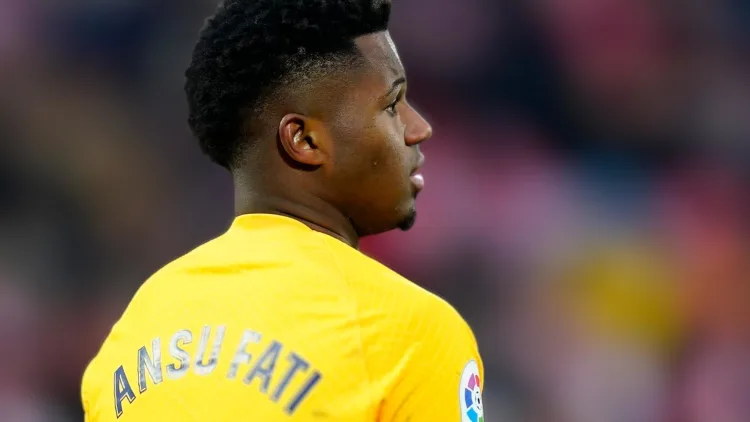-
News
- 22 hours ago
How much do Barcelona earn from TV, matchday and commercial revenue?

The 2023 version of the Deloitte Money List has been released and it shows the various sources of revenue for the top 20 clubs in world football.
The list is dominated by the Premier League, with 11 of its 20 entrants coming from there, while 16 of the top 30 are based in England. Barcelona remain prominent in the list, but with their financial difficulties, their situation is precarious.
HOW DO BARCELONA EARN REVENUE?
Barcelona’s revenue generation comes from three distinct places; matchday revenue, broadcast revenue and commercial revenue. These three areas combine to create a club’s overall revenue for a season.
But this has been a subject of immense issue for Barca. Drastic overspending on salaries in the wake of Neymar’s record sale to PSG, coupled with severe financial mismanagement and drop in revenues, have led to Barcelona’s position among European football’s elite being called into question.
READ MORE: How much do Man Utd earn from TV, matchday and commercial revenue?
READ MORE: How much do Arsenal earn from TV, matchday and commercial revenue?
READ MORE: Chelsea revenue: How much they earn from TV, matchday and commercial?
WHAT IS MATCHDAY REVENUE?
Matchday revenue consists of all revenue generated on a matchday. This includes ticket sales, food and merchandise, as well as hospitality offerings. Barcelona’s Camp Nou hosts one of the biggest capacities in world football, able to accommodate well over 100,000 fans when full.

But there’s two problems; the notoriously fickle Cules prefer to watch a winning team, and in recent years as financial issues have played havoc with their finances, their on-pitch performance has plummeted, particularly in the Champions League, a competition they were used to going deep in every season.
And the Camp Nou is in dire need of renovation; the stadium itself has no viable merchandise options and they have little capacity to cater for hospitality, unlike the ultra-modern stadiums such as Manchester City or Tottenham. Until they upgrade this will continue to be a factor. Indeed they earned the lowest matchday revenue in 2022 than they have for almost a decade.
| Year | Matchday Revenue (€m) |
|---|---|
| 2015 | 117 |
| 2016 | 121 |
| 2017 | 137 |
| 2018 | 145 |
| 2019 | 158 |
| 2020 | 127 |
| 2021 | 16 |
| 2022 | 103 |
WHAT IS COMMERCIAL REVENUE?
Commercial revenue is everything related to the overall sponsorship and brand activities of a football club. In the modern game this takes on many additional forms. Previously the only additional commercial revenue would be related to in-stadium advertising and perhaps a shirt sponsor arrangement.
READ MORE: Liverpool revenue: How much they earn from TV, matchday and commercial?
READ MORE: How much do Man City earn from TV, matchday and commercial revenue?

But now various parts of real estate attached to the club can be monetised; everything from sleeve sponsors, to sponsors of the stadiums themselves, commercial managers are looking at any possible way to successfully generate revenue by building relationships with a whole host of brands.
Barcelona’s commercial team reached record peaks in 2019 - the €384m of revenue from this source alone is the highest ever received by a single club. Their operation was massively successful at that time, but all the while financial issues and massive contract guarantees were threatening the overall health - and indeed debt - of the club.
The commercial arm of the business has struggled to return to pre-pandemic levels, though recent deals with the likes of Spotify for stadium ownership show that the appetite remains. And in tandem a new generation of young, marketable local talent, such as Ansu Fati, Pedri and Gavi, means that success in this area might not be far away.
| Year | Commercial Revenue (€m) |
|---|---|
| 2015 | 244 |
| 2016 | 296 |
| 2017 | 296 |
| 2018 | 323 |
| 2019 | 384 |
| 2020 | 338 |
| 2021 | 277 |
| 2022 | 284 |
WHAT IS BROADCASTING REVENUE?
Broadcasting revenue relates to monies earned by the negotiation of showing a club’s matches domestically and internationally in each competition they are entered into.
Domestic TV deals are the most lucrative, with the country in which the league is played happy to pay inflated fees to fill their broadcast schedules with as many football matches as possible. Leagues are also free to negotiate with individual countries and regions to show their matches in that territory.
The size of the foreign deals are directly correlated to how popular the league is in that market. Barcelona and Real Madrid had a particularly sweet arrangement for quite a long time in La Liga, pillaging at least 50% of the overall revenue that the league was able to generate until a new bargaining deal was agreed in 2015. The big two still take the lion’s share, but it’s not as uncompetitive and beneficial to the big two that it once was.

However La Liga’s international reach - with Latin audiences in USA, Mexico and South America - places it second only in terms of foreign TV deals and the potential for revenue generation beyond mainland Spain.
As such Barcelona’s broadcast revenue is competitively high in comparison with the Premier League’s top earners.
| Year | Broadcasting Revenue (€m) |
|---|---|
| 2015 | 200 |
| 2016 | 203 |
| 2017 | 215 |
| 2018 | 223 |
| 2019 | 298 |
| 2020 | 249 |
| 2021 | 290 |
| 2022 | 251 |
TOTAL REVENUE
Barcelona were leading the Deloitte Money league as recently as 2019 but off-field mismanagement, which culminated in the exit of Lionel Messi to PSG, coupled with the coronavirus pandemic, have put Barca into a financial hole that sees them still over €200m down from their pre-pandemic peak. Levers are being pulled and money is being given away to external investment groups in order to stay afloat, and their situation in general remains precarious.
| Year | Total Revenue (€m) |
|---|---|
| 2015 | 561 |
| 2016 | 620 |
| 2017 | 648 |
| 2018 | 690 |
| 2019 | 841 |
| 2020 | 713 |
| 2021 | 582 |
| 2022 | 638 |



















